CNS Depressants - Quiz 1 (copy)
1/33
Earn XP
Description and Tags
Hu Lectures
Name | Mastery | Learn | Test | Matching | Spaced |
|---|
No study sessions yet.
34 Terms
The ideal Inhalation Anesthetic
nonflammable
good chemical and metabolic stability
low incidence of myocardial effects
low incidence of hepatic and renal damage
rapid induction and emergence from anesthesia
adequate skeletal muscle relaxation
wide margin of safety
*not one drug has ALL properties, combo of agents often used
BGPC
⬇ coefficient (ex: 0.5) = ⬆ gas phase, ⬇ blood (anesthetic will be removed quickly → fast recovery
MAC
minimum alveolar conc.
→ ⬇ (polar) 1% needed to produce = stronger
⬆ the #, the weaker the potency
Lipid Hypothesis of 1899
+original, modification
The Meyer-Overton hypothesis: lipophilic, don’t produce anesthetic? property
Mullins Modification 1953: also related to volume
Protein Hypothesis
GABAa receptors - chloride ion channels
enhance binding of GABA to receptor
ex: propofol, midazolam
NMDA (excitatory receptor)
glutamate
antagonists:
Name this molecule
+class, formulation
Nitrous Oxide (N2O)
aka laughing gas
gaseous general anesthetics
formulation: inhalation
need cyclinder!
N.S. (no skeletal muscle relaxation)
gas @ room temp.
good analgesic
weak anesthetic
BGPC = 0.47
mostly in gas phase
MAC = 104% (weak potency)
extrapoled
fast effect, fast recovery (no hangover)

Name this molecule
+class, formulation
Cyclopropane
gaseous general anesthetics
formulation: inhalation
carbon based
S.R. (skeletal muscle relaxation)
flammable when mixed w/ O2
explosive
MAC = 17.5%
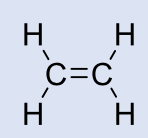
Name this molecule
+class, formulation
Ethylene
gaseous general anesthetics
formulation: inhalation
N.S.
MAC = 80%
flammable when mixed w/ O2
explosive
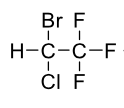
Name this molecule
+brand, class, formulation
Halothane (Fluothane)
Volatile Liquid General Anesthetics
formulation: inhalation
NO LONGER USED
2-Bromo-2-chloro-1,1,1-trifluoroethane
ethane derivative
halogenated alkanes replace H w/ F
⬆ halogens, ⬇ burn
5 halogens
b.p. : 50.2*C
room temp = liquid
BGPC = 2.5 (favors blood)
MAC = 0.74%
rapid induction
Volatile Liquid General Anesthetics (Cont’d)
Volatile - vapor on top of liquid
Liquid - CH3 - CH3 - O - CH3
b.p.: 7.8*C
@ room temp = gas
fluranes = safer → new b.p.:
chiral centers don’t matter bc activity relies on lipophilicity
fluoride tox : sevo >/= en » 180 > des
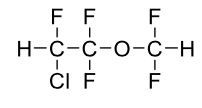
Name this molecule
+brand, class, formulation
Enflurane (Ethrane)
Volatile Liquid General Anesthetics
formulation: inhalation
derivative of methylethyl ether
S.R.??
b.p. : 58.5*C??
BGPC = 1.9
MAC = 1.7%
acid + ions

Name this molecule
+brand, class, formulation
Desflurane (Suprane)
Volatile Liquid General Anesthetics
formulation: inhalation
airway irritant, not suitable for
Ethane, 2-(Difluoromethoxy)-1,1,1,2-tetrafluoro-,(±)-
b.p.: 23.5*C
BGPC = 0.42
MAC = 6%
EASILY VAPORIZED!!
WANT TO KEEP IN BOTTLE!!
< 0.02% metabolism
rapid induction + emergence
can use output

Name this molecule
+brand, class, formulation
Isoflurane (Forane)
Volatile Liquid General Anesthetics
formulation: inhalation
-Chloro-2,2,2-trifluoroethyl difluoromethyl ether
different in 10 of halogens compared to Enflurance, Ethrane
S.R.
b.p.: 48.5*C
BGPC = 1.4
MAC = 1.17%
potency: halothane > 150 > em > sevo > des (6% MAC)

Name this molecule
+brand, class, formulation
Sevoflurane (Ultane)
Volatile Liquid General Anesthetics
formulation: inhalation
Propane, 1,1,1,3,3,3-Hexafluoro-2-(flurormethoxy)-
b.p.: 58.6*C
BGPC = 0.68
MAC = 2.05%
hepatic & kidney tox→
General Side Effects of Volatile Liquid General Anesthetics
+cause, ADEs/: bromide, chloride, fluoride, storage conditions
Side effects are due to halide metabolites
Bromide and Chloride effects
sensitizes the heart to NE and EPI causing ventricular fibrillation (heart beats faster, gets out of sync, and then stops beating)
arrhythmia (abnormal heart beat)
Fluoride
kidney and liver damage due to bioaccumulation
Storage = 15-30°C
Packaging of Fluranes
Color-coded
sevoflurane = yellow
isoflurane = purple
enflurane = orange
desflurane = blue
Advantages of injectable anesthetics
no special equipment needed to administer
many have faster onset than inhaled agents
rapid recovery; suitable for outpatients
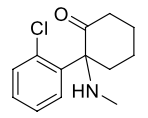
Name this molecule
+brand, aka, formulation
Ketamine HCl (Ketalar)
aka “Special K”
formulation: IV anesthetic
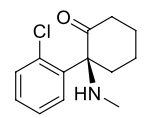
Name this molecule
+brand, formulation
Esketamine (Spravato)
formulation: IV anesthetic
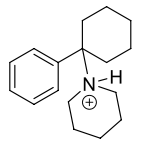
Name this molecule
+aka, formulation
Phencyclidine
aka: “Angle Dust, PCP”
formulation: IV anesthetic

Name this molecule
+brand, formulation
Propofol (Diprivan)
formulation: IV anesthetic

Name this molecule
+brand, formulation
Midazolam HCl (Versed)
formulation: IV anesthetic
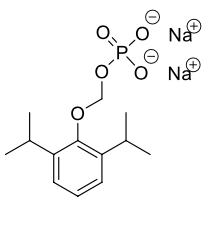
Name this molecule
+brand, formulation
Fospropofol (Lusedra)
formulation: IV anesthetic
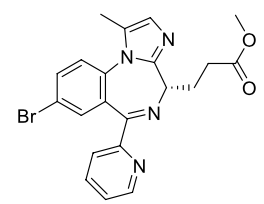
Name this molecule
+brand, formulation
Remimazolam (Byfavo)
formulation: IV anesthetic
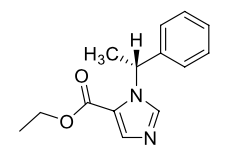
Name this molecule
+brand, formulation
Etomidate (Amidate)
formulation: IV anesthetic

Name this molecule
+brand, formulation
Methohexital Sodium (Brevital Sodium)
formulation: IV anesthetic

Name this molecule
+brand, formulation
Thiopental Sodium (Sodium Pentothal)
formulation: IV anesthetic
Sedative def.
a drug that exerts a calming effect with little to no effect on motor or mental functions
Hypnotic def.
a drug that produces drowsiness and encourages the onset and maintenance of sleep
resembling as close as possible natural sleep
Anxiolytic def.
a drug that specifically relieves excessive anxiety, a sense of apprehensive expectation that is either appropriate to the situation or excessive
panic attacks, phobias, etc.
Sedative and hypnotics
+moa, receptors